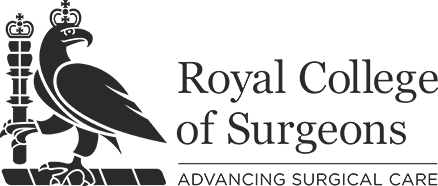In the first Labour budget for nearly 15 years, Rachel Reeves delivered this Government’s first Budget amid frenzied speculation as to what would be included.
The Government had already persistently warned us that the country needed to navigate “unprecedented circumstances” with warnings of unexpected fiscal black holes needing to be filled along with a need to fix our “broken” public services. Labour had promised not to increase Income Tax, National Insurance, VAT or Corporation Tax in their manifesto and said that they aimed to protect working people (while struggling to define what that actually meant). We had been warned that the Budget would increase taxes by a record £40bn, something that turned out to be true.
In this Halloween Budget Reeves tried to balance the tricks regarding those tax increases with some treats regarding spending and in this Blog we go through some of the main changes
1. Employer’s NIC:
The biggest of the tax increases related to National Insurance Contributions for employers which will rise from 13.8% to 15% from April 2025. In addition to this the threshold at which businesses start paying National Insurance on a workers’ earnings will be lowered from £9,100 to £5,000. While this may not impact employed doctors and staff it will by its nature affect employers including GP Practices. The cost of employing someone on a salary of £9,100 will increase by £615 a year while someone on a salary of, for example, £30,000 will cost an extra £615. While the Government tried to soften this change via what is known as the Employment Allowance, GP practices are not able to utilise this.
2. Capital Gains Tax (“CGT”)
It had been widely trailed that CGT would be increased from the current rates of 10% for basic rate taxpayers and 20% for higher rate and additional rate taxpayers with some commentators speculating that the rates would be equalised with the much higher income tax rates. As of today, the new rates of CGT will be 18% for basic rate taxpayers and 24% for higher/additional higher rate taxpayers. Note that the CGT rates on the sale of residential property (excluding those covered by Principal Private Residence Relief) were already 18% and 24% and these rates were not increased.
Those who own their own businesses and are able to qualify for Business Asset Disposal Relief currently have a CGT rate of 10% on the sale of their businesses up until the first £1 million of gains. This rate is being increased to 14% from 6 April 2025 and 18% from 6 April 2026.
3. Inheritance Tax (“IHT”)
Currently the first £325,000 of an individual’s estate can be inherited tax-free, rising to £500,000 if that individual’s main residence is passed to a direct descendant. These “nil-rate bands” had been frozen until 2028 but will now be frozen until 2030 instead.
For the first time, inherited pensions will be brought into the inheritance tax regime from April 2027, the delay almost certainly being to give the Government time to establish the details of how this will work.
Some IHT reliefs have also been altered including “Agricultural Property Relief” and “Business Property Relief.
4. Income Tax Thresholds
The thresholds at which the various income tax rates start, outside of Scotland, have been frozen for a long time now and will continue to be frozen until 6 April 2028. This then has resulted in “fiscal drag”, which we have spoken about before at Medics’ Money, where people are dragged into higher tax rates as their pay increases. It was expected that the Government would extend this (much as they announced they will for IHT) but instead they advised that from 6 April 2028 the thresholds will increase with inflation. Of course they may change their minds before this but a sliver of good news nonetheless.
Other changes include:
- As expected, VAT will be applied on private school fees from January 2025
- Again as expected, the “non-dom status” will be abolished
- Fuel duty: The 5p cut to fuel duty on petrol and diesel, due to end in April 2025, will be kept for another year
Other Announcements
As well as the tax increases, Rachel Reeves announced some large spending commitments. Included within this is a £22.6bn increase in the day-to-day health budget and a £3.1bn increase in the capital budget over this year and next. While these are, of course, large amounts, the £22.6bn may not be as high as it looks given that these amounts include the pay uplifts and the increase in Employer’s NIC that the NHS will now have to pay.
And speaking of pay, the notes that accompany the Budget are quite telling revealing that further pay increases for public sector workers will only be above inflation “if they can be funded from improved productivity”. Section 2.88 notes that pay settlements from 2025-26 will only be above 2.6% (The OBR forecast for inflation) if there are good reasons with “acute recruitment and retention” issues being given as their example.
Finally, an increase in the National Minimum Wage was announced, increasing from £11.44 an hour to £12.21 an hour from April next year for those aged over 21. For people aged between 18 – 20 the National Minimum wage will rise from £8.60 to £10.
What Wasn’t Included?
Finally, with so much speculation regarding what would be included in the Budget it is interesting to think about what wasn’t included:
- ISAs were not changed. There had been speculation that a lifetime cap would be announced or a reduction in the amount that got be invested in ISAs each tax year but in the end they were not changed.
- There were concerns that NIC would be levied on pension contributions made by companies but Reeves seems to have backed away from this move.
- Moreover, there was no mention of restricting tax relief on pensions (a maximum relief of 30% had been mentioned in the press) and pensions will continue to provide relief at the taxpayer’s marginal rate.
- There were rumours about a limit to the amount of tax-free cash you can take from your pension in retirement but this did not happen – you can continue to take up to 25% of your pension as tax-free cash, capped at £268,275 over your lifetime.
- There were no changes made to the Pension Annual Allowance which continues to provide grief to doctors but nor was the Lifetime Allowance brought back.
Conclusion
So, a big Halloween Budget with big tax increases and big spending commitments. A budget that will of course hurt some but, from the speculation, could definitely have been worse with many predictions being wide off the mark. As always, we will leave it up to you guys to decide what you think of Labour’s first Budget.








